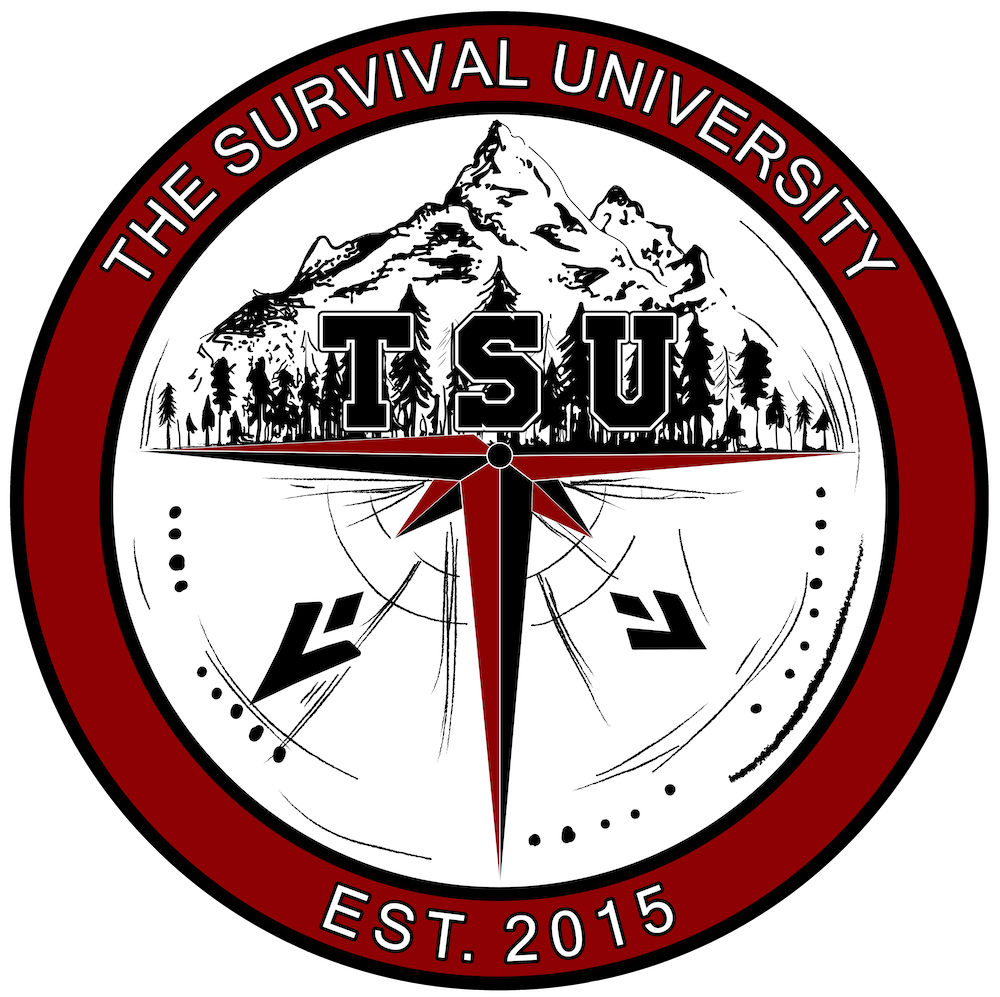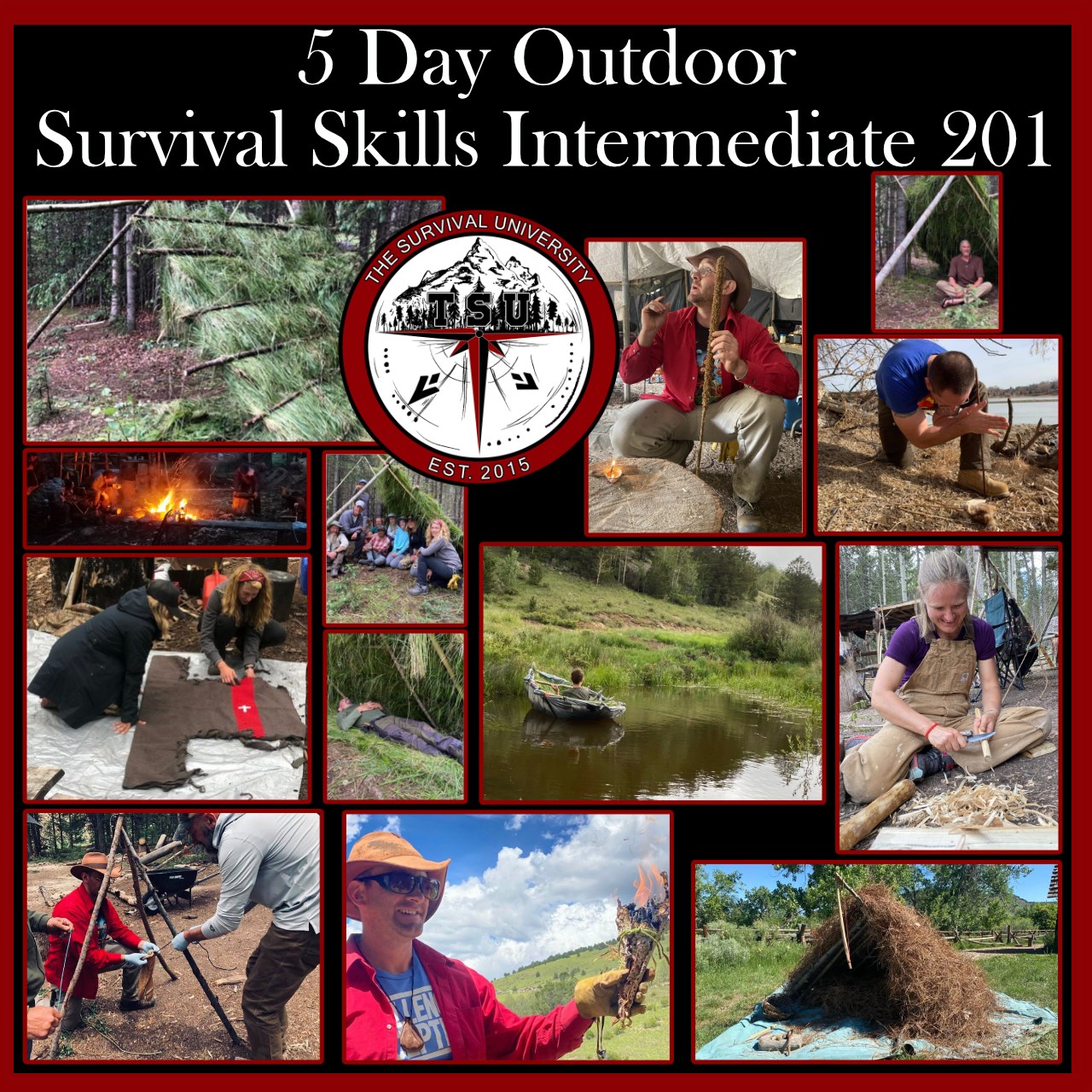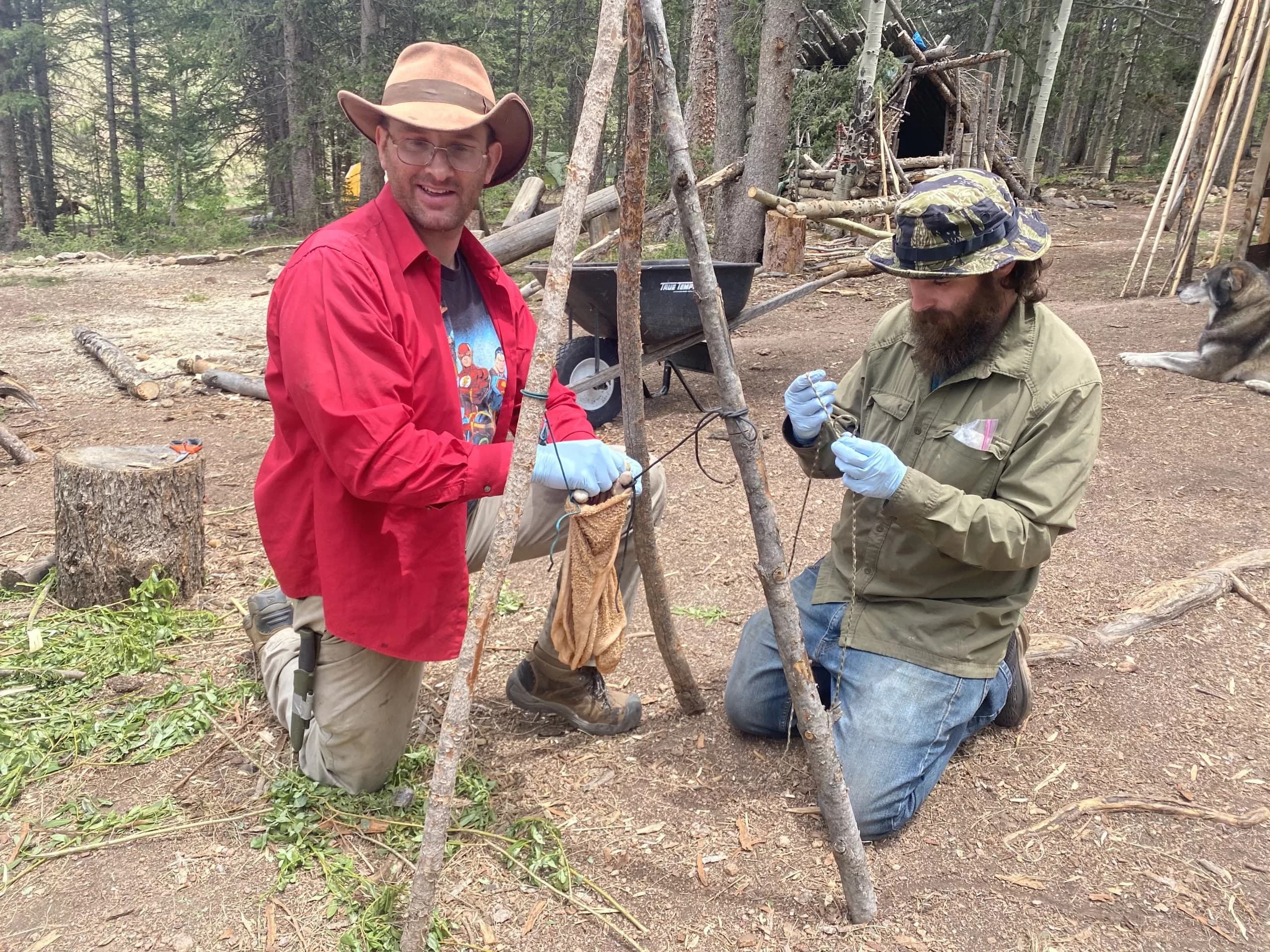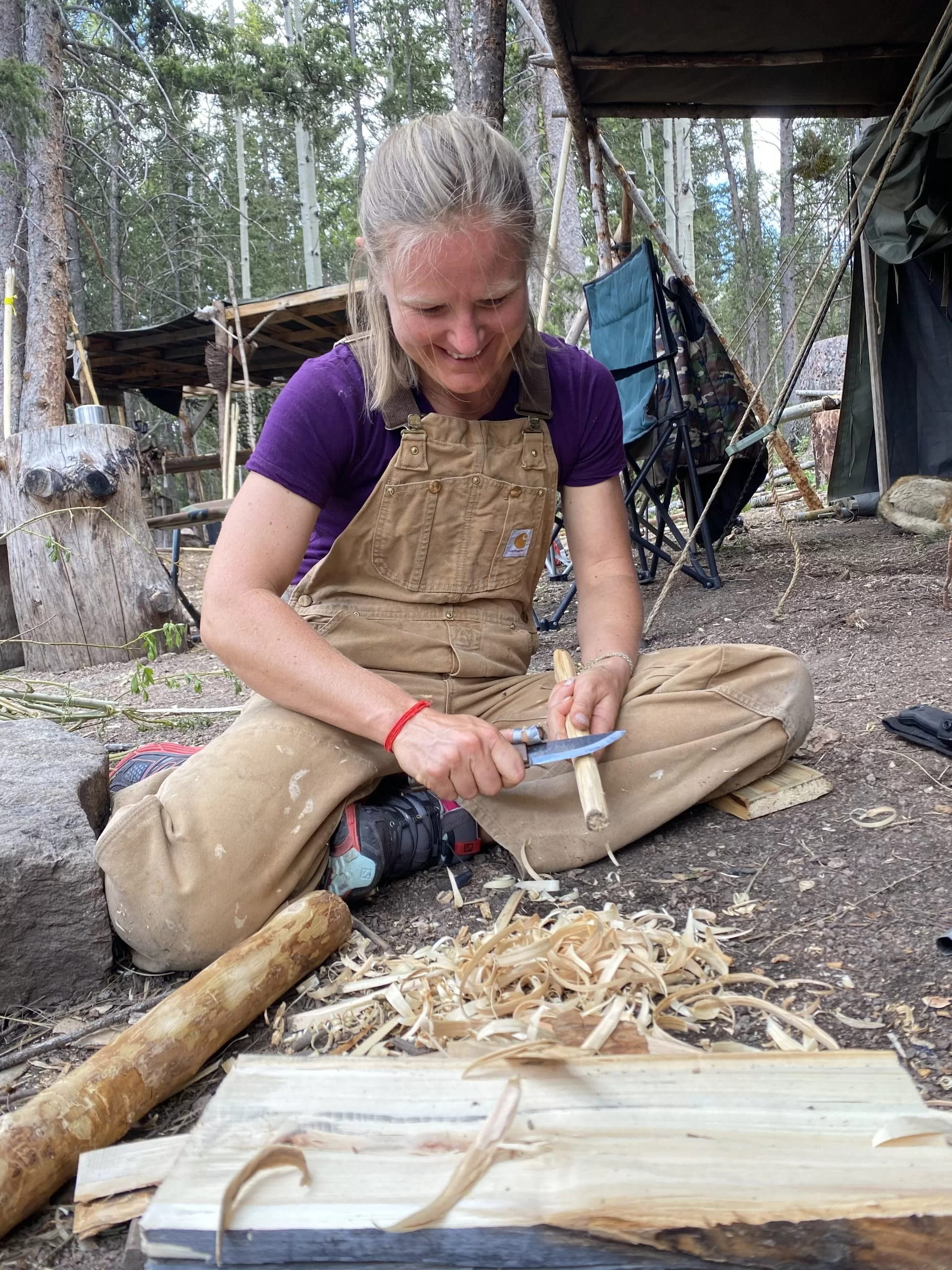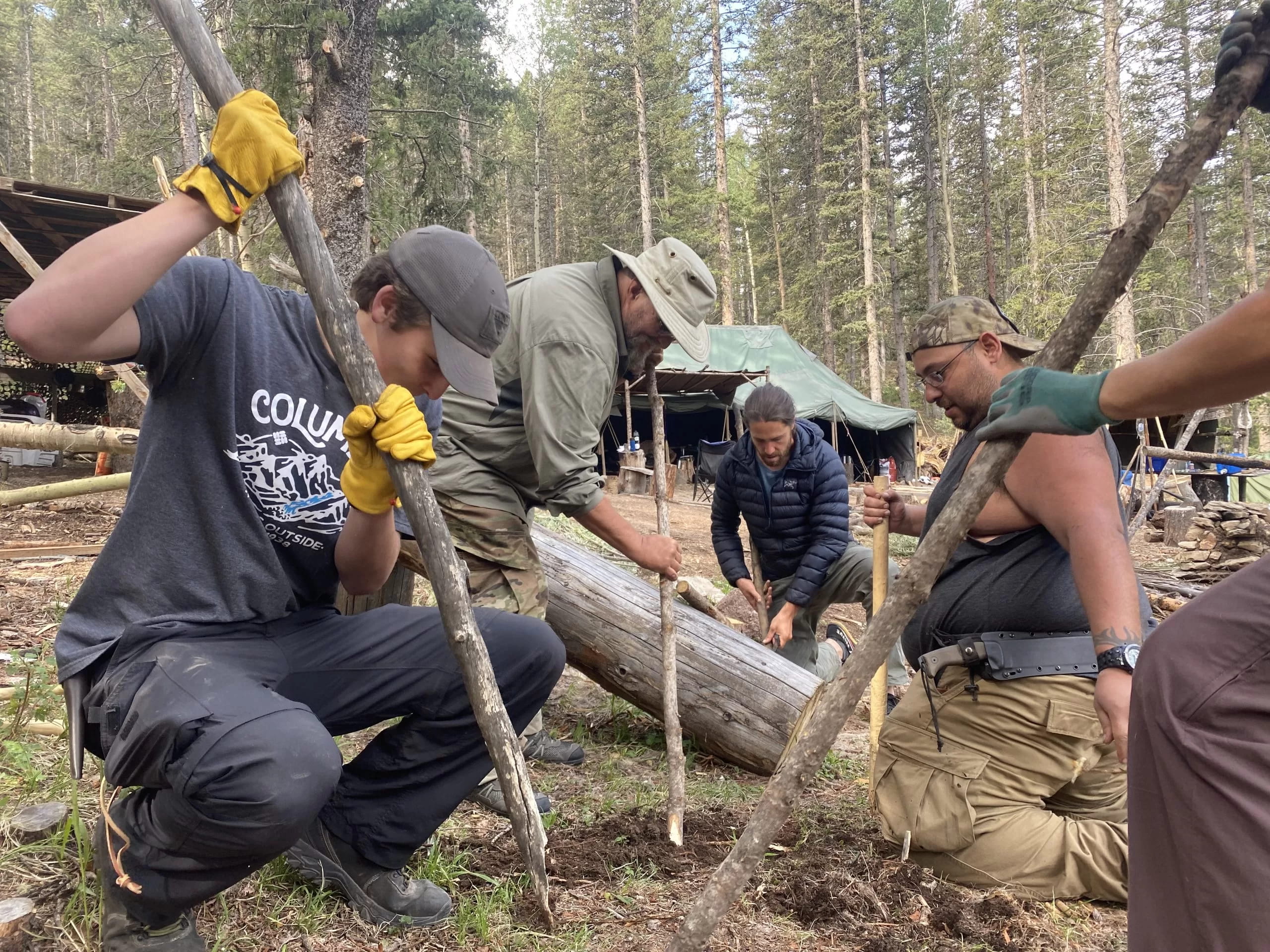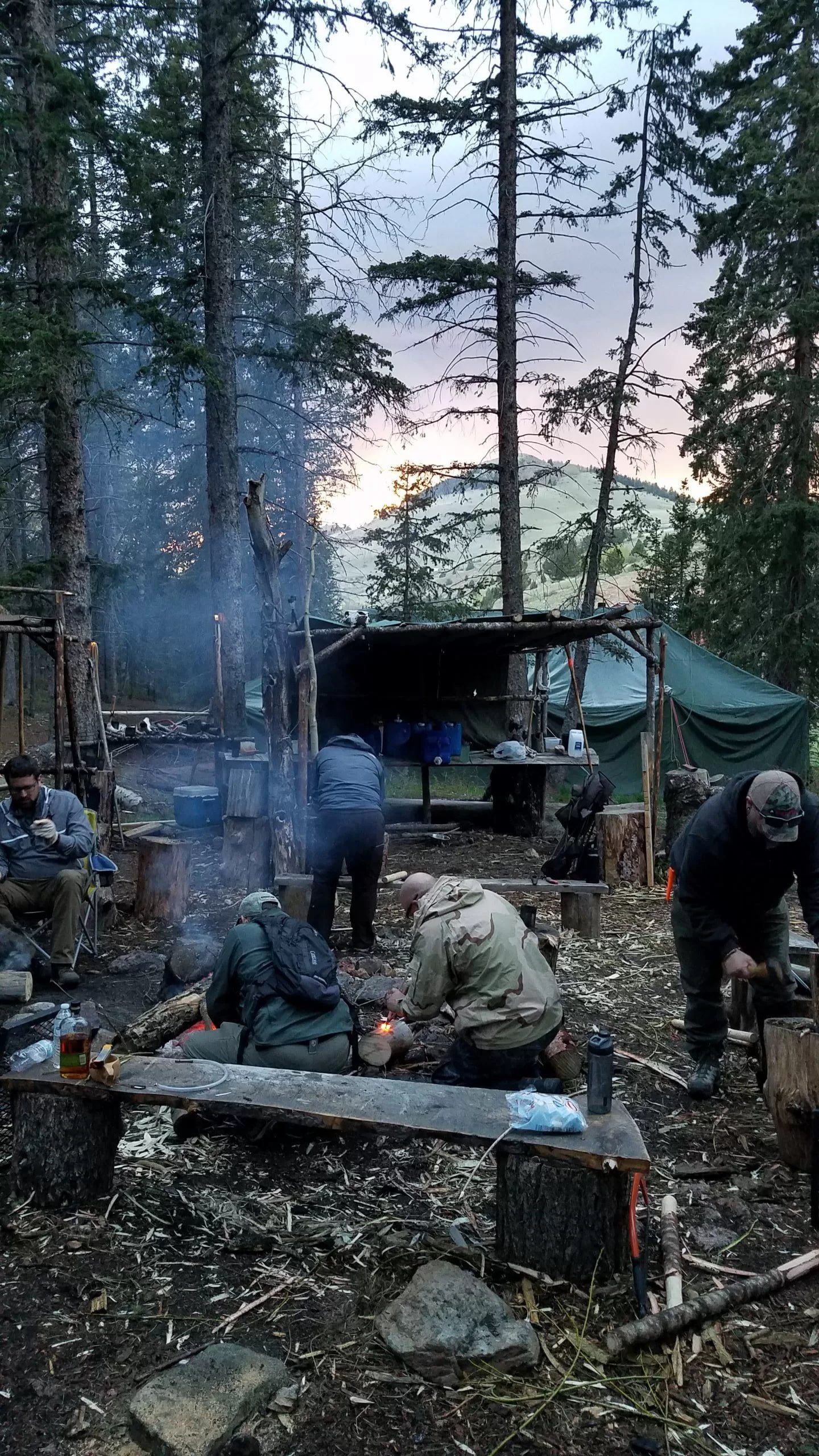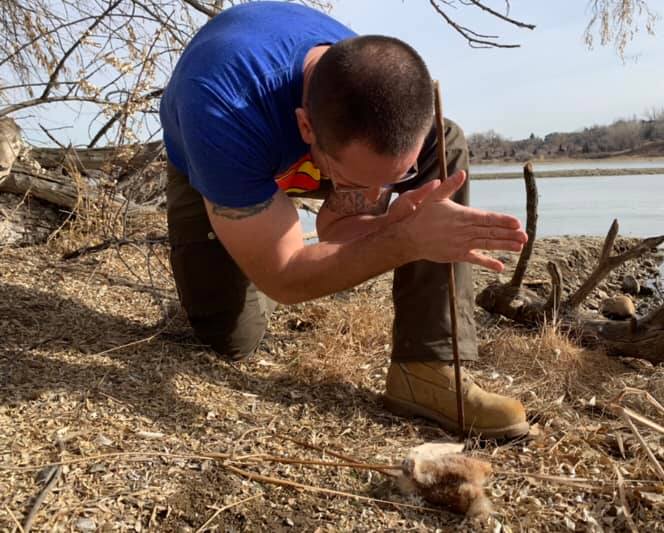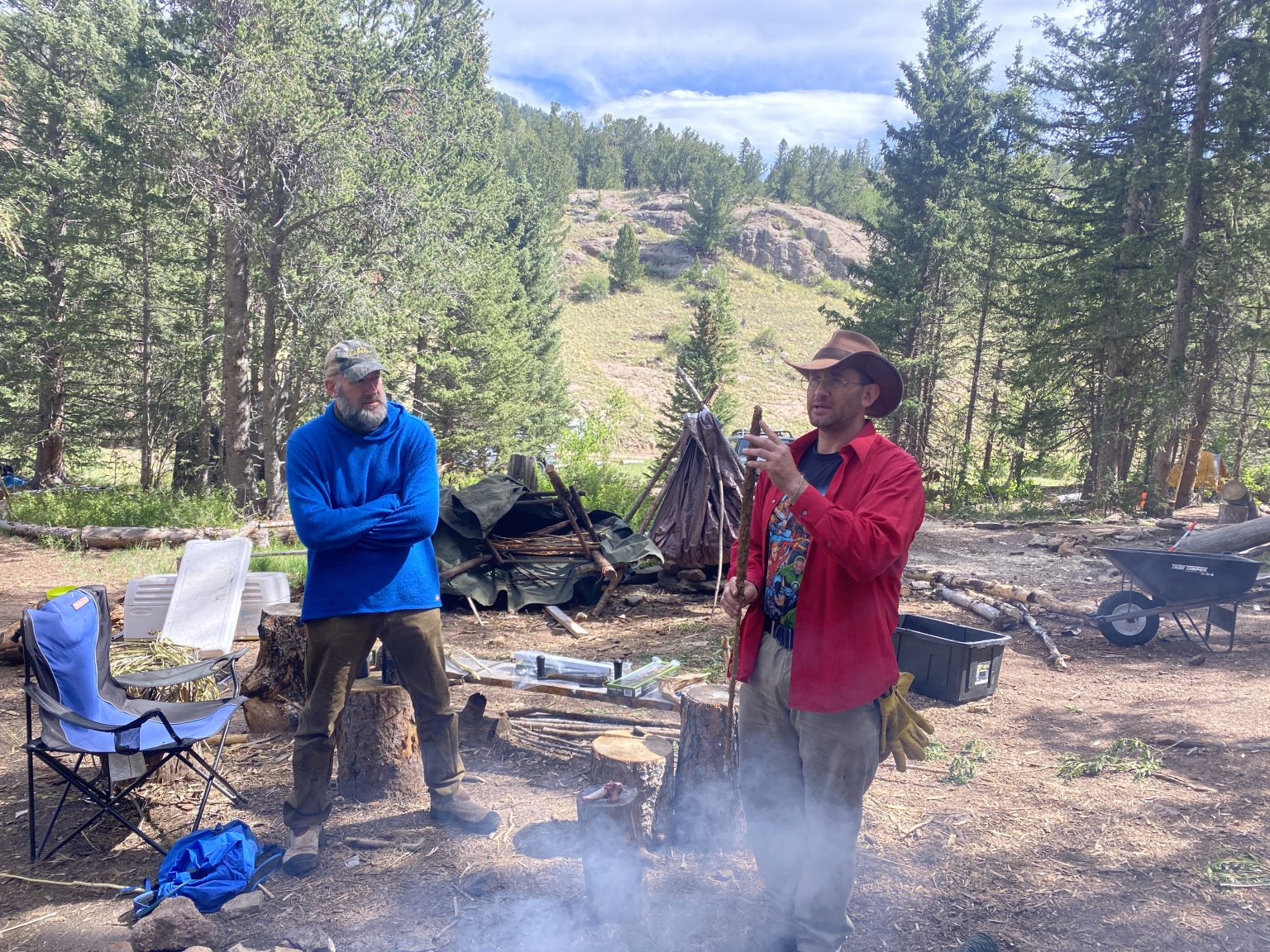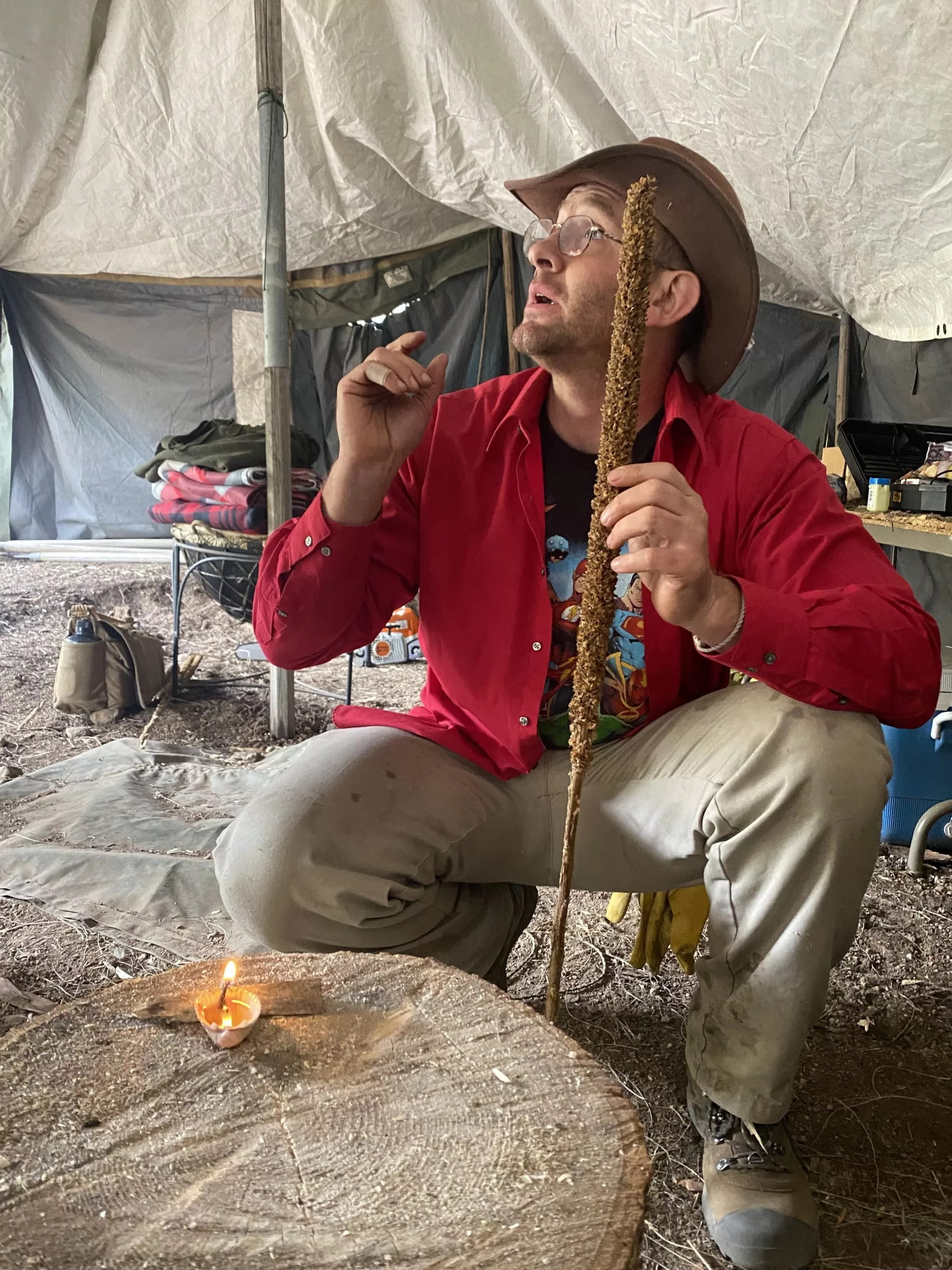5 DAY OUTDOOR SURVIVAL SKILLS INTERMEDIATE 201
$595.0
Once a student finishes Survival 101, they know the 20% that can deal with 80% of the issues they may run into in a 72-hour survival situation. Survival 201 is all about reviewing, fine-tuning, mastering, and moving to the next level of the skills our students learn in the basic program.
Dates
July 5-9, 2024
COURSE DESCRIPTION
Once a student finishes Survival 101, they know the 20% that can deal with 80% of the issues they may run into in a 72-hour survival situation. Survival 201 is all about reviewing, fine tuning, mastering, and moving to the next level of the skills our students learn in the basic program.
We begin looking at survival in the long term and in situations other than one might find in the woods, for example dealing with salt or chemical water from farmlands, shelter in plains and open areas, and fire when resources are soaked, rare, or otherwise difficult to work with.
As always, we are subject to what nature gives us, but there are certain things a student can expect from this class. We will of course enjoy any opportunity the mountain and weather give us to add to the program as each class is a unique opportunity to grow.DAY ONE
- Review knife basics, safety, and fine tune the most needed techniques. As an example, few things are as comfortable in camp as sitting in your freshly made bush chair while carving a spoon and explaining to your companions why they should not sit on a rock or the cold ground. We will review safety, batonning, cross batonning, basic notches, and carving techniques, each ending with a project that will make every camp resemble those lost to the old ones who first learned to live with the Rocky Mountains.
- Self-mapping and indigenous methods from around the world to become as comfortable as a coyote in any new or revisited environment. Few of us really head off for day adventures or even camping trips with modern, full orienteering kits. Which is fine because most of human adventure and exploration was done prior to reliable compasses or even the word orienteering became common parts of the prepared adventurer’s kit. Focusing on self-mapping, positive azimuth uniform layout (P.A.U.L.) method of the special forces, Lakota and other indigenous navigation methods, emergency action plans, backtracking, trail blazing and more. The Lakota navigation stick alone, which has nothing to do with shadows, makes this entire day of training worth it for anyone who likes to get off the beaten path.
- Cooking devices are not only a great addition to the basic pioneer skills we started the day with, but they wrap up the day and provide for a perfect environment around the campfire to trade stories, skills, and really reflect on the tribal communities that can be found in the history of every one of your amazing ancestors pasts.
Often referred to as the gift shops portion of the camp, a hardworking student should leave room in their car for such projects as a camp chair, Roycroft pack, cooking utensils and or devices, Aztec chairs and more. Using the skills from day one throughout the camp will lead each student to a true level of comfort in making whatever they need from what they have.
DAY TWO
In 101 we were focused on getting a fire, now we’re focusing on truly mastering fire as a tool, friend, and even a shelter in and of itself.
- Begin the day by reviewing the skills taught in 101 for any students who may not have practiced in a while and answering any questions that may have arisen when our basic students got home after their first class.
- Several techniques to improve starting a fire in the worst of conditions, to include swamps, saturated wood, no wood, and more.
- Mastering the ferro rod, no more pitch wood or cotton balls allowed. This portion is all about effecting a fire every time, no matter what. This includes hardwoods, soaked woods, car tires, and more.
- Fire lays and a fire as a shelter by itself with other components.
- Carrying fire, second fires, and other methods to build on the hard-won embers from the bow drill that you made in part one.
- Cooking survival breads and using fire to sustain life as more than just a microclimate.
- Fire as a tool when you have limited or no gear, this includes indigenous techniques from all over the world to use fire to make tools and other gear.
DAY THREE
My grandfather used to say that the skill of a woodsman or woman could be judged by how quickly they made fire and how comfortably they slept. Combining days two and three are all about getting top marks in his grading system.
- Using location itself as a shelter component and finding the best location for your shelters.
- Review of using clothing as a shelter by itself and for comfort.
- The SAR and Ron Hood’s trash bag survival systems.
- Thatching roofs and other shelter techniques for areas without large amounts of leaves and other commonly used primitive shelter resources.
- Beds, beds, beds: the often rushed and most important part of almost any shelter will be reviewed and added onto. Not just survive, but sleep so well you need to set an alarm to wake up the next day.
- Review of knots most commonly used to effect canopy and primitive shelters
- Mastering the Holden shelter.
- Making a capote coat on the go or for the long term. This most valuable piece of gear has stood the test of time in some of the worst environments humans have ever tried to conquer. Not only will we look at this as a long-term piece of gear, but also in making one on the fly should our students ever need to ditch a car or otherwise create a moving shelter to effect a self-rescue.
DAY FOUR
This day seems the simplest to explain, yet it is often one of the most talked about days. Imagine having a car break down or being on a camping trip and waking your companions up to coffee and doughnuts. Few things say self-reliance like being able to leave the Ramen at home and feast like royalty from your simple cook kit or less.
- Survival breads and other long-term foods using limited resources
- Sprouting and other ways to balance your nutritional needs throughout the whole year.
- Coffee and doughnuts.
- Stick cooking.
- No pots, pans, sticks or utensils: the art of ash cooking is not only romantic but adds a flavor rivaling many five-star restaurants.
- The canteen kitchen and other small cooking kits that pack small yet play big.
DAY FIVE
Water needs to be looked at differently from season to season and environment to environment. We must know how to get water where there is none, purify water, get rid of chemicals, and survive with other contaminated waters such as salt water or heavy metal farm water. Whether driving cross country, coping with natural disasters, being lost in the woods, or fighting zombies, water should be one of the skills that every adventurer truly masters.
- Review of finding and purifying water.
- No gear boiling and safe water techniques.
- Seasonal water and concerns specific to each season and environment.
- Transpiration.
- Water filtration techniques and tricks.
- The good, the bad, and ugly of hacks and how to actually use many of them. The things often overlooked about mastering these techniques.
- Large scale water collection with limited gear.
- Dew and other resources that provide way more drinkable water then one may realize.
LENGTH
5 days/4 nights
ACCOMMODATIONS
If students do not wish to camp with us, the town of Cripple Creek is a short 15 minute drive from our location and Woodland Park is 30 minutes away. Students will be responsible for making their own reservations with nearby hotels. We do have a central community campfire location with a few designated campsites but mostly offer dispersed camping. Students will be able to drive their car within 100 feet of the main camp and will not have to hike gear in for long distances.
- Shelter Lodging: Students can stay in one of our 20 person GP Medium tents when not running field exercises or may stay in their own tents, campers, vehicles or a primitive shelter. Our tents are complete with wood burning stoves for cold weather conditions. This is a shared tent for all students that wish to use it.
- Sanitation/Hygiene: A portable restroom and potable water will be provided at main camp.
FOOD AND WATER REQUIRED
Water will be provided but students will need to bring their own food. We recommend quick field expedient meals such as freeze dried hiking meals or MRE’s. They can quickly be made at our primitive camps and won’t slow down the learning process. However, students may bring any food that they wish to cook over the campfire or on their own personal camp stove.
Food can be purchased locally at nearby facilities. Walmart and several local eateries are within a reasonable driving distance.
SUGGESTED GEAR LIST
We do not provide students with gear unless they have purchased it from us ahead of time. Not much gear is needed for our courses, though good equipment does speed the learning process up greatly! Gear does not have to be purchased from our store to attend the course, but we recommend survival gear of equivalent quality.
- Fixed blade knife (Preferably a full tang bushcraft style knife WITHOUT a serrated edge)
- Ferrocerium rod
- Poncho or Rain Gear
- Outdoor Clothing and appropriate footwear
- Folding hand saw
- Overnight Camping Gear (sleeping bag, tent, etc.)
- Sleeping pad or yoga mat
- Tarp or SOL emergency blanket
- Base plate compass
- 100’ of 550 Paracord
- Shemagh or large cotton scarf or bandana
- Headlamp or flashlight and extra batteries
- Cooking pot and eating utensils
- Single walled metal canteen
- Nalgene or other plastic water bottle
- Metal nesting cup
- Sawyer mini water purifier
- Signal mirror (credit card sized)
- Emergency whistle (non-metal)
- Bic lighter (new)
- Glow sticks
- 5 contractor sized trash bags
- Sunscreen and sunglasses
- Insect repellent
- Leather work gloves
- Notebook and pencil
- Small Backpack
CLOTHING REQUIRED
Warm outdoor clothing, warm gloves and hat, outdoor boots and wool socks. Cotton clothing is highly discouraged in the mountains! Wool will keep you warm even when wet and synthetics will dry faster. Layers are important in Colorado. You will want a water wicking base layer, an insulating mid layer, and a waterproof breathable outer shell. Check out our Clothes Layering Basics if you are unsure of what to wear.
Check Recommended Items List for more details!
If it is still not clear what gear is needed for our survival courses, then we have assembled a complete kit that is still high quality but for a budget friendly price. All the items in this kit were hand selected by our instructors to be the best bushcraft tools on a budget. This survival kit is a useful starter kit that can be used in all of our courses. These are all must have tools at a good price. It’s a great survival kit, bug out kit, go bag, or use it as a solid foundation to build a kit that perfectly fits your needs. With this kit and our training anybody can survive like a king in almost any environment!
NOTE
Due to the different levels of prior experience and knowledge among students in each class, individual outcomes may vary. Weather conditions can also be a factor in changing class content slightly. Nonetheless, our instructors will always endeavor to be as accommodating and consistent as circumstances will allow to ensure students get the best training experience and value for money.
